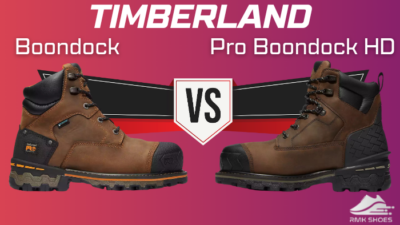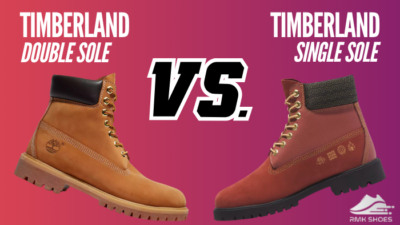The choice between the Echo 3 and Vaporfly 3 is compelling for runners seeking ultimate speed and performance.
With both shoes boasting carbon fiber plates, propulsive foams, and minimalist designs, you may wonder which is best for you.
In this article, I’ll dissect their strengths, weaknesses, and unique characteristics. I’ll analyze everything from midsole responsiveness and upper fit to outsole durability and price point, helping you decide based on your needs and running goals.
So, can On compete with the Nike super shoe? Let’s find out!
A Brief Overview of Nike Vaporfly 3 and On Cloudboom Echo 3
Engineered with cutting-edge technology and meticulous attention to detail, the Nike Vaporfly 3 offers a lightweight design and responsive cushioning, allowing runners to achieve their maximum potential with every stride.
Its sleek silhouette is complemented by Nike’s signature ZoomX foam and carbon fiber plate for energy return and propulsion.
In contrast, the On Cloudboom Echo 3 boasts a unique design crafted for speed and agility.
Featuring On’s CloudTec cushioning and a responsive Speedboard, this shoe delivers a smooth yet explosive ride, perfect for race days and high-intensity training sessions.
With both models pushing the boundaries of performance and innovation, runners can expect nothing less than exceptional performance and comfort from the Vaporfly 3 and Cloudboom Echo 3.
Attribute Comparison between Cloudboom Echo 3 and Vaporfly 3
Both shoes are for running but differ in cushioning, responsiveness, weight, durability, and design. Understanding these qualities helps you choose based on your running style, training goals, and comfort preferences.
| Feature | On Cloudboom Echo 3 | Nike Vaporfly 3 |
|---|---|---|
| Release Date | July, 2023 | April, 2023 |
| Category | Carbon Plate Running Shoe | Carbon Plate Running Shoe |
| Weight | 7.6 oz (men's size 9) 6.6 oz (women's size 8) | 6.5 oz (men's size 9) 5.6 oz (women's size 8) |
| Stack Height | 38.6 mm in the Heel 28.4 mm in the Forefoot | 38 mm in the Heel 30 mm in the Forefoot |
| Heel-to-Toe Drop | 10.2 mm | 8 mm |
| Carbon Plate | Speedboard® carbon plate | Flypate carbon plate |
| Upper | Ultralight Technical Microfiber | Flyknit VaporWeave material |
| Midsole | Helion™ HF hyper foam, CloudTec® technology | ZoomX foam |
| Outsole | Rubber | Rubber |
| Cushioning | Moderate and Comfortable | Soft and Responsive |
| Sizing | True to Size | True to Size |
| Transition | Smooth and Efficient | Efficient and Quick |
| Breathability | Good | Excellent |
| Stability | Less stable | More stable |
| Durability | More durable | Less durable |
| Running Distance | 5K, 10K, Half marathon | 5K, 10K, half marathon, Marathon |
| Running Style | Neutral | Neutral |
| Experience Level | Beginner friendly | Advanced runners |
| Price | Around $289.99 | Around $260 |
Both Echo 3 and Vaporfly 3 are good running shoes, but looking closely, you’ll see one is better. To see their differences, check the next section for a detailed comparison.
Key Differences between On Cloudboom Echo 3 and Nike Vaporfly Next% 3
To determine the top-performing or most comfortable road racing shoes, you need to understand what makes the Cloudboom Echo different from Vaporfly. Differences include responsiveness, cushioning, support, and overall fit, impacting a runner’s experience.
Below, I’ve highlighted the distinctions between On Running Cloudboom Echo 3 and Nike Vaporfly Next% 3.
Upper Construction
The Echo 3’s upper is all about being lightweight while providing solid support. The structure of the upper hugs my foot, giving me a sense of security with every step.
However, one thing to note is that the microfiber material does a great job of repelling liquids. So, It is awesome if you’re running in wet conditions, but it’s not the most breathable.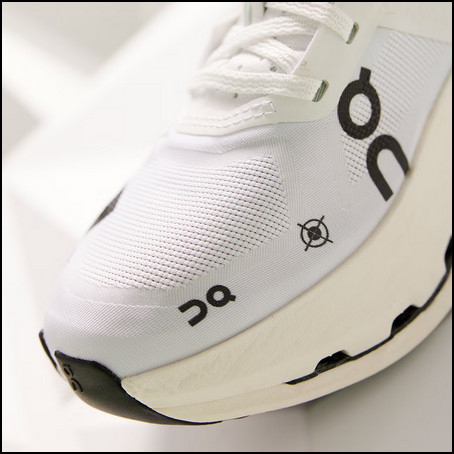
The thin tongue is a nice touch, preventing any annoying sliding around inside the shoe.
And speaking of sliding, there’s no heel slippage here, either. But I’ve found that using a runner’s knot helped to dial in the fit even more.
The extra eyelets are a nice bonus for those who like to customize their lacing for different fits. Also, the premium feel of the laces with silicone inserts adds a touch of luxury, and the traditional style collar with padding all around keeps my feet comfy.
Now, onto the Vaporfly 3.
This upper is a noticeable upgrade from its predecessor. The fit around the ankle collar has been improved, addressing past issues with a bit of gaping.
The midfoot and forefoot areas feel accommodating, shifting towards a more comfortable trainer-like feel while maintaining that racer edge.
The Flyknit material with larger holes definitely improves breathability, making these shoes stand out for racers.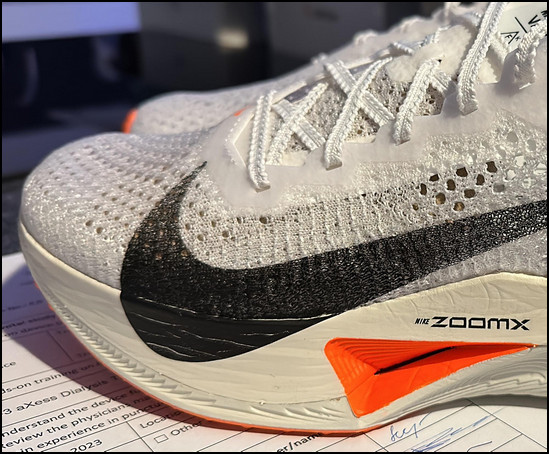
The non-gusseted tongue with looped laces is a smart design choice to prevent sliding, and the ample padding adds to the overall comfort. The internal heel counter and padded collar ensure effective heel lockdown, primarily if you use a runner’s knot.
And, of course, those premium-feel laces with silicone inserts and a rough texture are a standout feature that I absolutely love.
Now, picking a winner is no easy task. If I had to choose, it would be the Vaporfly 3.
Midsole & Cushioning
With the Cloudboom Echo 3, On’s gone all out with their new Helion™ HF hyper foam crafted from Pebax foam. It’s like I’m running on clouds!
The Speedboard® carbon plate adds this extra oomph to my stride. It propels me forward with every step. And the CloudTec technology is like having little springs under my feet. It offers dynamic cushioning that adapts to my running style.
But what stands out to me is the minimalistic design of the midsole.
On Running has stripped away all the unnecessary bulk and left only the essentials for a more direct return of energy. The firmer midsole means my foot engages quickly with the ground, giving me that responsive feel I crave during races.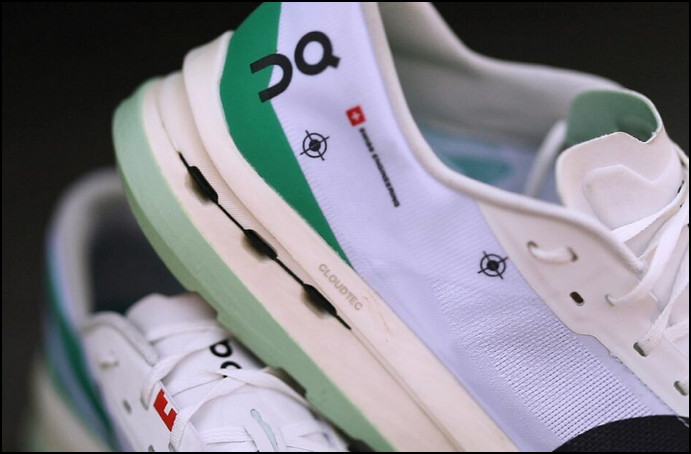
On the other hand, we have the Nike Vaporfly 3.
The revamped midsole foam feels like a pillow for my feet, providing added comfort without sacrificing performance.
And that Flyplate carbon plate maximizes energy efficiency with every stride.
Now, let’s talk about the real star of the midsole, the ZoomX foam. It is soft yet responsive, giving me that extra bounce. Then, the Vaporfly’s aggressive toe spring adds even more bounce.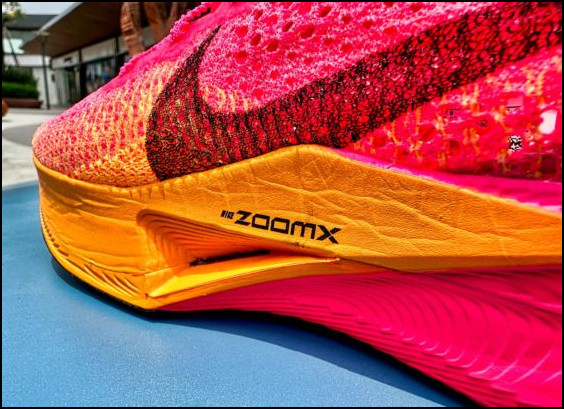
But here’s where things get interesting.
While the VF3’s foam is denser and lighter, giving me that soft feeling I love, the Echo 3’s firmer midsole provides different responsiveness.
Ultimately, choosing a winner is tough.
If I want maximum cushioning and a plush ride, the Vaporfly 3 takes the crown. But if I’m craving that responsive, minimalist feel with springy steps, the Cloudboom Echo 3 is the clear winner.
Outsole & Traction
The Cloudboom Echo 3 has a rubber covering over the forefoot, acting like a shield.
On Running has strategically placed the smaller rubber sections in key wear areas. It’s like the shoe knows where I need that extra grip, preventing unwanted slips.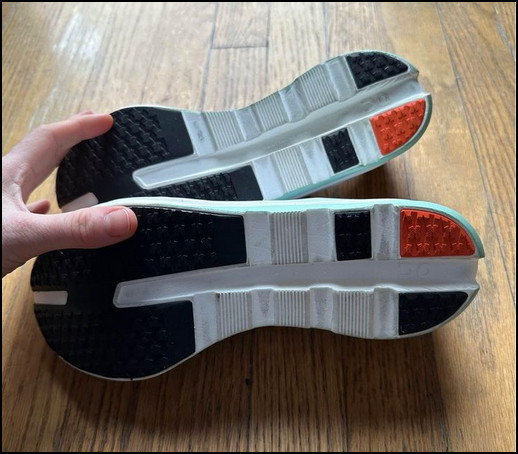
The geometrically optimized rocker shape of the outsole pushes me forward with every step, propelling me into my run effortlessly. And the cherry on top is a more durable outsole.
Trust me, these racing shoes hold up better than the Vaporfly super shoes.
Now, let’s shift our focus to the Nike Vaporfly 3.
The outsole is thinner, but don’t let that fool you. The new waffle outsole rubber at the front is fantastic, improving the grip.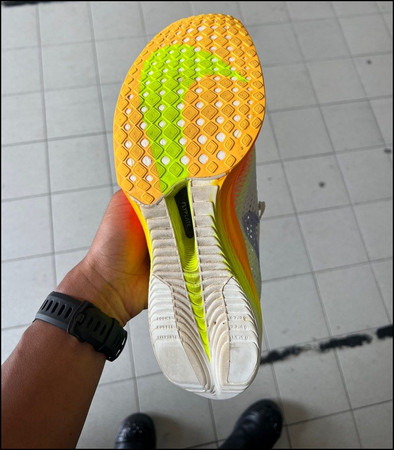
Although I have to admit, it shows more wear and tear compared to the Echo 3.
But the rubber with optimized traction for various surfaces is super adaptable. These running shoes can handle it all like a champ from road to trail.
However, when choosing a winner, I prefer the Cloudboom Echo 3.
Fit and Comfort
The Echo 3 has a snug fit, but in a good way. True to size, it hugs your foot, especially around the midfoot.
The traditional heel collar with decent padding is perfect. It’s like a cozy little nest for your heel, giving that firm, secure feel. I appreciated that hold and structure – no slipping and sliding here.
Additionally, the extra lacing eyelets offer a customizable fit.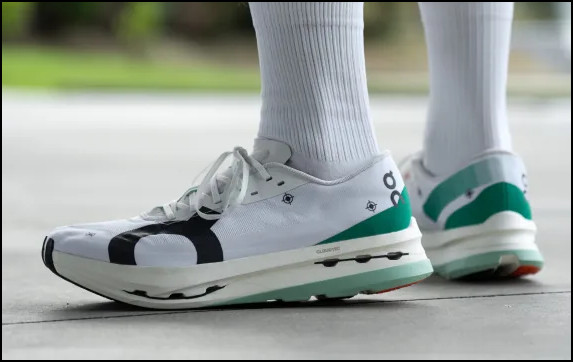
Now, onto the Nike Vaporfly 3.
It’s also true to size, but the fit is slightly different. It’s roomier, which can be a plus for some.
The softer feeling is a nice touch, too, especially if you like a more cushioned experience.
But these road racing shoes are more flexible, and that looser lacing might make you compromise a bit on your foothold.
Additionally, the lightweight design gives the shoe a more spacious fit.
However, I’d go with the On Cloudboom Echo 3 if I had to pick a winner. The snug fit, secure hold, and customizable lacing just hit the sweet spot for my feet.
Durability Dynamics
The On Cloudboom provides excellent durability. The outsole is tough as nails.
After pounding the pavement for weeks, they still look like they just rolled out of the box.
So, for those who want shoes that can take a beating and still keep on running, the Echo 3 is the shoe you should get.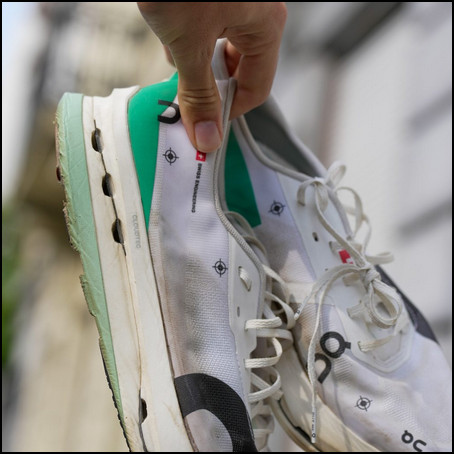
Now, let’s talk about the Vaporfly 3.
These running shoes might not be speed demons, but durability is not their strongest suit.
After a few runs, I started noticing the wear and tear. The upper began showing signs of use faster than I expected.
Don’t get me wrong; the VF3 is still kicking but starting to look a bit worn.
So, if you want a racing shoe that lasts longer, get the On Cloudboom Echo 3.
Breathability Showdown
The Cloudboom Echo 3 boasts an excellent Microfiber design. It’s like your feet are getting a breath of fresh air. The microfiber amps up the breathability, making my long runs feel like a breeze.
Now, shifting gears to the VF3.
These road running shoes come equipped with an outstanding breathability feature thanks to their Flyknit upper.
Honestly, it’s hard not to appreciate the airflow that comes with this Flyknit structure. Whether you’re sprinting or cruising, your feet stay cool and comfy.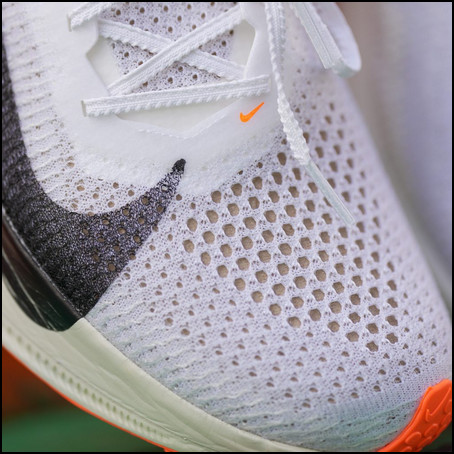
So, when comparing the Echo 3 and Vaporfly 3, both shoes excel in keeping my feet cool.
However, if I had to pick a winner regarding breathability, I’d have to go with the Nike Next% Vaporfly 3.
Stability & Support
I was pleasantly surprised by Cloudboom’s stability.
The carbon sole and plate combo does wonders in keeping me steady on my feet. It’s like I’m gliding effortlessly.
Also, the heel stability is top-notch, giving me that extra confidence with every step.
Now, onto the Vaporfly 3. This shoe is a game-changer when it comes to stability.
The outsole construction, coupled with the ZoomX & carbon plate, takes the VF3’s stability to a whole new level.
And let’s not forget about the upper; it hugs my foot like a glove, keeping it locked in place.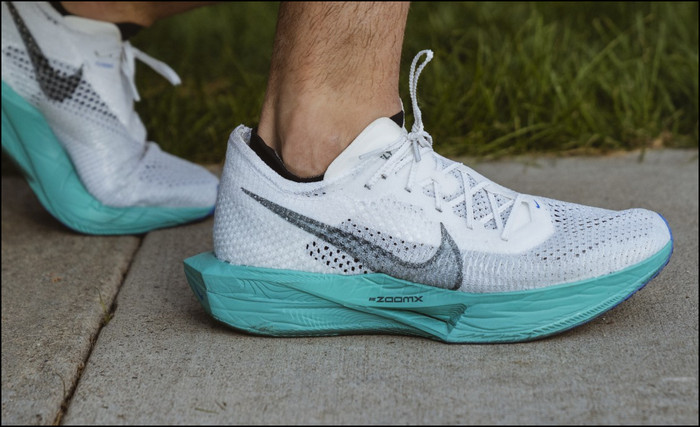
But what really sets the Vaporfly apart is its stability in the front toe area. I can push off with so much power and control; it’s wild!
Therefore, the Nike Vaporfly 3 wins this round. The overall stability gives me that extra edge when I’m on a run.
Performance During My 1K Run Test
I immediately noticed their firm feel when I slipped the Cloudboom Echo 3. They were designed to be speedy, not necessarily cloud-like in comfort.
The Echo 3 is a departure from the bouncy cushioning you might expect. While it lacked energy responsiveness, it made up for it with firmness.
During my 1K run test, I felt locked in and secure, which definitely helped with my speed.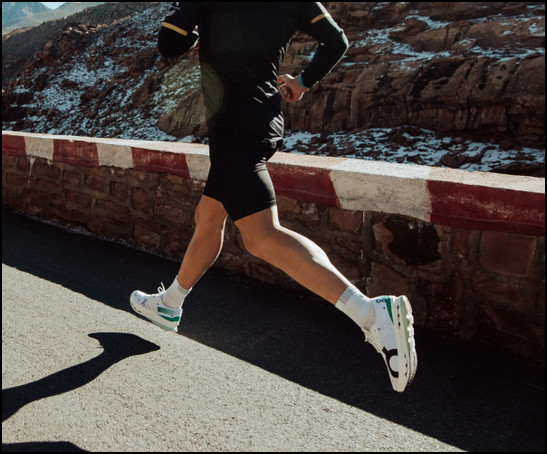
And speaking of speed, my time with these super shoes was 2:49. Not bad at all!
On the other hand, we have the Nike ZoomX Vaporfly NEXT% 3.
Now, this is the third iteration in the carbon-plated series, so expectations were high. However, I have to say, I was a bit disappointed with their performance.
They required more effort than I anticipated, and the propulsion I hoped for wasn’t there.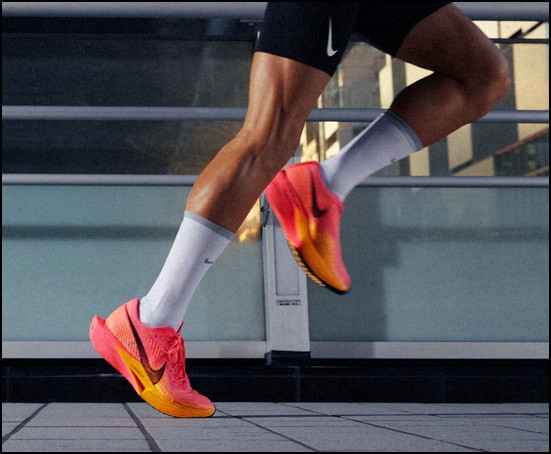
Sure, the Vaporfly 3 super shoe looked sleek and visually appealing, but that roomy fit compromised the security I need when I’m going for speed.
The softer feel compared to previous Vaporfly editions was nice, but it didn’t compensate for my lack of responsiveness during my run.
And speaking of my run time, it was 2:57 with these shoes on.
So, in conclusion, for me, the winner in this 1K run test is the On Cloudboom Echo 3.
Advantages and Disadvantages of On Running Cloudboom Echo 3 and Nike Vaporfly 3
Considering both racing footwear’s good and bad points will help you decide based on your running preferences. Choose the one that fits your needs best.
Let’s look at the pros and cons of Cloudboom Echo 3 and Vaporfly 3.
On Cloudboom Echo 3
- »Carbon plate for efficient strides.
- »Responsive CloudTec technology.
- »Ultralight and breathable mesh.
- »Aerodynamic design reduces wind resistance.
- »Good stability.
- »Smooth transitions in long-distance races.
- »Extra eyelets for customizable lacing.
- »More durable outsole with rubber.
- »Snug fit.
- »Higher price.
- »Weighs more than the Vaporfly 3.
Nike Vaporfly Next% 3
- »Flyplate maximizes energy efficiency.
- »VaporWeave upper is lightweight, breathable, and water-resistant.
- »Responsive ZoomX foam cushioning.
- »High-visibility design.
- »Optimized rubber outsole for grip.
- »Widely popular among elite and recreational runners.
- »Efficient transitions.
- »Aggressive toe spring for extra bounce.
- »Roomier design and softer feeling.
- »Better stability.
- »Less durable.
- »Roomier fit may compromise foot lockdown.
- »Occasional availability issues.
Cloudboom Echo 3 or Vaporfly 3: Which is the Best Carbon Plate Shoe?
Both the Echo 3 and Vaporfly 3 are top carbon-plated racing shoe contenders but cater to slightly different runners and needs.
The Vaporfly remains king for pure speed and feathery weight, excelling in short races and for runners who prioritize responsiveness. However, its minimal upper and less durable outsole might not suit everyone.
The Cloudboom Echo 3 offers a compelling alternative for those seeking more comfort, stability, and versatility. Its slightly firmer midsole provides a balanced ride, while the more secure upper delivers a snugger fit.
While not quite as feathery as the VF3, the Echo 3 still shines in tempo runs and mid-distance races, and its durable outsole makes it a better choice for higher-mileage runners.
Ultimately, the best shoe comes down to personal preference and running style.
If pure speed and minimalist feel are your priorities, the Vaporfly 3 is the champion. But for a comfortable, durable, and versatile runner, the Cloudboom Echo 3 is the best.
FAQs
Is Alphafly better than Vaporfly?
Choosing between Alphafly and Vaporfly depends on your race distance and priorities. Alphafly shines in marathons and ultras with its plush cushion and stable platform. But it feels heavier. Vaporfly, lighter and racier, dominates shorter distances with its snappy responsiveness but lacks comfort for longer runs.
How much difference does Vaporfly make?
Vaporfly shoes can shave seconds off your race time. Studies show a 2-4% performance boost, but it depends on your fitness level and running style. They help reduce muscle fatigue with bouncy foam and a propulsive carbon plate.
Which On Cloud shoes have a carbon plate?
The Cloudboom Echo 3 from On Running features a carbon fiber plate. This high-performance shoe is designed for race day and boasts a full-length carbon Speedboard for a propulsive feel and energy return.
How long will Vaporfly 3 last?
The Nike Vaporfly 3 lifespan depends on your usage. Expect around 100 miles before the cushioning loses its bounce and responsiveness. The outsole might wear faster, especially on uneven terrain.

